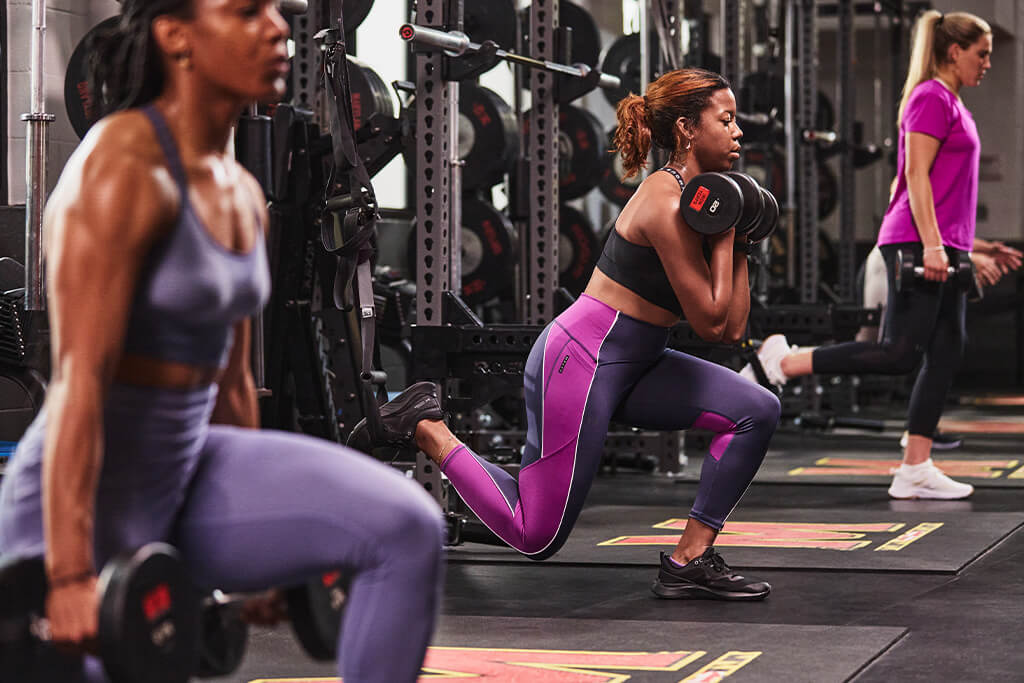
Painless Squats - Pain in the back or knees when squatting?
Pain-Free Squats
Do you experience back or knee pain during squats? Today, we’ll go through 6 common squat mistakes that can lead to pain in this fantastic exercise and how to fix them.
How can an exercise be considered “the best” for fat burning and muscle building while many trainers choose to avoid it? That’s the case with the traditional barbell squat – one of the most well-known and timeless exercises but also one of the most debated.
Squats are a fundamental movement, whether performed with or without weight on your back. The disagreements often revolve around the movement’s safety. Many avoid squats out of fear of injury or after experiencing pain during the exercise.
Don’t Fear the Squat
If you can’t sit down – which is exactly what a squat is – without injuring yourself, the worst thing you can do is avoid the movement entirely. Whether or not you choose to add weight, the most important thing is correcting small mistakes that cause pain or limit your training results.
Why Do Squats Hurt?
What makes squats so effective is also what can lead to injuries. Squats are a compound exercise, meaning they activate many muscles – from the thighs and hamstrings to the glutes, back, and even the core.
The problem is that if the wrong muscles take on the heavy lifting, the exercise can cause pain, especially in the back. Your technique and body type also affect how you perform the movement. There’s no universal “correct” squat depth – it entirely depends on your body.
Here, we’ll break down common issues and how to fix them to make your squats pain-free and effective.
Problem 1: Weak Top Position
The first thing to observe in squats is your grip and upper back activation. Many focus entirely on the role of the legs in the exercise but forget that the upper body should also be engaged. A loose grip on the bar means we fail to activate the muscles that protect the upper body and thoracic spine, which will affect the entire movement.
Solution: Grip the bar as tightly as possible and pull your elbows under the bar. This creates tension throughout the upper body, giving you better control and protecting the spine. It also helps you lift heavier and reduces the risk of injury overall.
Problem 2: Leaning Forward
If you bend too much at the hips during squats, the load shifts from the quads to the glutes, hamstrings, or even the lower back. These muscles lack the strength or stability of the quads, which can lead to overloading and pain.
Solution: Start by reducing the weight and focusing on proper technique. Pull your elbows downward and keep your chest up to maintain a more upright torso. Also, work on mobility in your ankles, hips, and upper back to improve your movement pattern.
For weak core or leg muscles, complementary exercises like lunges, Bulgarian split squats, and step-ups can help build strength and stability.
Problem 3: Poor Ankle Mobility
Limited ankle mobility prevents the shins from moving forward naturally, which can place unnecessary stress on the knees and alter the movement path.
Solution: Place a small weight plate under your heels to achieve a deeper squat. To improve ankle mobility long-term, include exercises like driving the knee forward toward a wall from a standing position or “drawing” the alphabet with your big toe to challenge mobility in multiple directions.
Problem 4: Knees Collapsing Inward
If your knees cave inward during squats, it may signal technical deficiencies, weak muscles, or poor mobility.
Solution: Test knee movement by performing squats without weight near a wall. If this is an issue, switch to goblet squats and focus on engaging your lats and core while actively pushing your knees outward. To strengthen the glutes, add exercises like hip thrusts and glute bridges.
Problem 5: Poor Breathing Technique
Not breathing correctly during squats means you miss out on utilizing intra-abdominal pressure, which acts like a natural lifting belt.
Solution: Take a deep breath and brace your core before each rep. As you push up from the bottom, exhale forcefully through pursed lips. This helps you maintain stability and avoid injuries.
Problem 6: Always Using a Belt
A lifting belt can be helpful for heavy lifts but shouldn’t be used for every set. Over-relying on the belt hinders the development of a strong and functional core.
Solution: Use the belt only for your heaviest sets, such as around 70% of your max lift and above. This will develop overall strength and reduce the risk of injury.
In Conclusion
By avoiding these six problems, you significantly reduce the risk of painful squats. Good technique and consistent practice are the two fundamental components of a pain-free squat session.
These tips are for anyone uncertain about how their technique affects their squats. However, if you’ve experienced long-term knee, hip, or back pain, we recommend consulting a healthcare provider.
Good luck, and take care!



